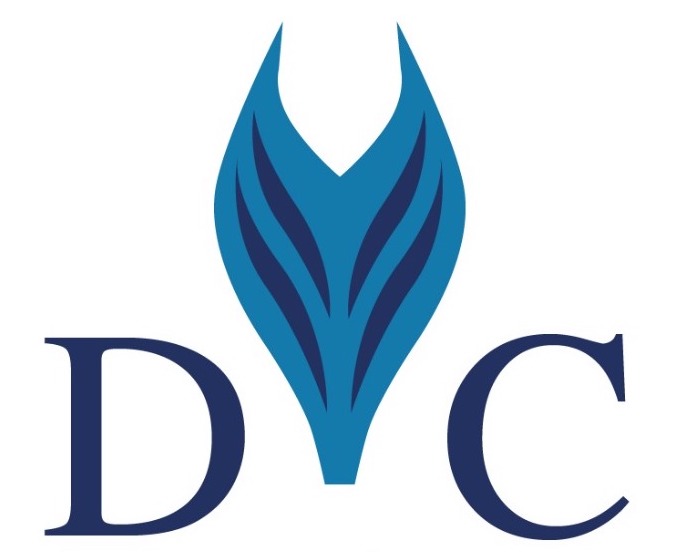As Germany’s economy continues to evolve, the need for a comprehensive digitalization strategy has become increasingly apparent. Companies like Düsseldorf Consulting GmbH, based at Königsallee 22, 40212 Düsseldorf, are at the forefront of this transformation. By embracing digital transformation, Germany can unlock significant economic benefits, including a projected €82 billion increase in GDP.
The German digital economy is poised for growth, driven by the adoption of digital technologies and innovative approaches to international digital policy. As Germany continues to shape its digital future, it is essential to understand the complexities of its digitalization strategy.
Key Takeaways
- Germany’s digitalization strategy has the potential to boost GDP by €82 billion.
- Düsseldorf Consulting GmbH is a key player in Germany’s digital transformation.
- The German digital economy is driven by the adoption of digital technologies.
- A comprehensive digitalization strategy is crucial for Germany’s economic growth.
- Germany is shaping its digital future through innovative international digital policies.
Overview of Germany’s Digitalization Strategy
The German government has been actively pursuing a comprehensive digitalization strategy to boost its economy and infrastructure. This strategic approach is multifaceted, involving various initiatives for digitalization in Germany that aim to drive technological advancements and foster a competitive edge in the global market.
At the heart of Germany’s digitalization strategy is the Digital Strategy 2025 program, which demonstrates how the Federal Ministry for Economic Affairs and Energy has been setting priorities in recent years. This program underscores the government’s commitment to technology advancements in Germany, focusing on areas such as artificial intelligence, blockchain, and the Internet of Things (IoT).
The German government digital strategy is designed to promote digital literacy, improve digital infrastructure, and encourage the adoption of digital technologies across various sectors. This includes enhancing cybersecurity measures, promoting digital education, and supporting startups and innovation hubs.
Key Focus Areas
- Digital Infrastructure: Improving broadband connectivity and 5G networks.
- Digital Economy: Supporting startups, innovation hubs, and digital entrepreneurship.
- Digital Governance: Enhancing e-government services and digital public administration.
- Digital Education: Promoting digital literacy and skills development.
| Initiative | Description | Impact |
|---|---|---|
| Digital Strategy 2025 | Comprehensive plan for digitalization | Boosts economy and infrastructure |
| Artificial Intelligence | Promoting AI research and development | Enhances technological competitiveness |
| Digital Education | Improving digital literacy and skills | Prepares workforce for digital economy |
As stated by the government, “Actions speak louder than words” (ACTA NON VERBA), reflecting the commitment to tangible progress in digitalization. The strategy is a testament to Germany’s proactive approach to embracing digital transformation, ensuring it remains a leader in the global economy.
Key Components of the Strategy
To navigate Germany’s digital landscape, understanding the key components of its digitalization strategy is essential. Germany’s digitalization efforts are centered around enhancing its digital infrastructure, ensuring robust data security, and fostering digital skills development.
Building a gigabit optical fiber network is crucial for Germany’s digital future, as it provides the necessary infrastructure for high-speed data transmission. This network is the backbone of Germany’s digital economy, supporting businesses, research institutions, and public services.
The strategy also emphasizes the importance of Germany’s digital policy in promoting digital innovation. This includes initiatives to support startups, encourage investment in digital technologies, and develop a favorable regulatory environment.
Key Areas of Focus
- Enhancing digital infrastructure
- Promoting data security and privacy
- Fostering digital skills and education
- Encouraging digital innovation
The following table outlines the key components and their significance in Germany’s digitalization strategy:
| Component | Description | Significance |
|---|---|---|
| Gigabit Optical Fiber Network | High-speed data transmission infrastructure | Supports digital economy and public services |
| Data Security | Measures to protect data privacy and security | Essential for trust in digital services |
| Digital Skills Development | Programs to enhance digital literacy | Prepares workforce for digital economy |
By focusing on these key areas, Germany aims to strengthen its position as a leader in digital innovation in Germany, driving economic growth and improving the quality of life for its citizens.
Government Initiatives Supporting Digitalization
Germany’s digitalization strategy is backed by a series of government initiatives aimed at fostering a robust digital economy. The government has recognized the importance of digitalization in driving economic growth, improving public services, and enhancing the overall quality of life.
The Digital Strategy 2025 is a cornerstone of these initiatives, outlining ten key steps toward achieving a digital future. One of the primary objectives is to create a gigabit optical fiber network, ensuring high-speed internet access across the country. This ambitious plan is expected to significantly boost Germany’s digital infrastructure, making it more competitive on a global scale.

Another critical aspect of the government’s strategy is the launch of the New Start-up Era initiative. This program aims to encourage entrepreneurship and innovation by providing support to start-ups, including funding, mentorship, and resources. By fostering a vibrant start-up ecosystem, the government hopes to drive technological advancements and create new job opportunities.
In addition to these initiatives, the government is also investing in various public-private partnerships. These collaborations are designed to leverage the strengths of both the public and private sectors, driving digital innovation and implementation. By working together, the government and private sector can develop and deploy cutting-edge technologies, enhancing Germany’s digital landscape.
The government’s commitment to digitalization is further demonstrated through its investment programs. Significant funds are being allocated to support digital projects, including research and development initiatives. These investments are crucial for driving technological progress and ensuring that Germany remains at the forefront of the digital revolution.
Overall, the government’s initiatives are playing a vital role in supporting Germany’s digitalization efforts. By providing a comprehensive framework and investing in key areas, the government is helping to create a robust and competitive digital economy.
Challenges in Implementation
As Germany pushes forward with its digitalization strategy, several implementation challenges arise. One of the primary hurdles is adapting regulatory frameworks to ensure fair competition and strengthen individual data rights. The German government digital strategy aims to create a robust digital economy, but this requires updating existing laws to accommodate new technologies and digital business models.
The need for technological adaptation is another significant challenge. Germany’s digital transformation requires not only the adoption of new technologies but also a cultural shift towards embracing digitalization across all sectors. This involves investing in digital infrastructure, enhancing cybersecurity, and promoting digital literacy among the population.
Public awareness and engagement are also crucial for the successful implementation of the digitalization strategy. The government must work to educate citizens about the benefits and risks associated with digital technologies. This can be achieved through public campaigns and educational programs that highlight the importance of digitalization in everyday life.
Furthermore, ensuring that the digitalization process is inclusive and benefits all segments of society is a key challenge. This involves addressing regional disparities in digital infrastructure and ensuring that vulnerable groups are not left behind in the digital transformation. For more insights on investing in digital technologies, you can explore resources like investing in educational technology in Germany.
In conclusion, while Germany’s digitalization strategy is ambitious, its success hinges on overcoming the challenges associated with its implementation. By addressing regulatory hurdles, promoting technological adaptation, and enhancing public awareness, Germany can navigate its digital transformation effectively.
Regional Disparities in Digitalization
As Germany pushes forward with its digitalization efforts, regional disparities have emerged as a key issue. While metropolitan areas boast competitive broadband markets, serving around three-fourths of Germany’s population, rural areas lag behind in terms of digital infrastructure.
The disparity is not just in terms of access to digital services but also in the quality of digital infrastructure. Urban areas have seen significant investments in high-speed internet and digital services, making them hubs for innovation and technology. In contrast, rural areas face challenges such as limited internet connectivity and slower adoption of digital technologies.
Initiatives for digitalization in Germany have been designed to address these disparities. For instance, the German government has launched programs aimed at improving broadband connectivity in underserved regions. These initiatives include financial incentives for telecom companies to invest in rural areas and subsidies for rural households to adopt digital technologies.
One successful case study is the development of digital hubs in various regions, which has fostered innovation and entrepreneurship. These hubs provide resources such as coworking spaces, mentorship programs, and access to funding, helping to bridge the gap between urban and rural areas in terms of digital opportunities.
To further support underserved regions, Germany’s digital policy emphasizes the importance of digital literacy and education. Programs have been implemented to train individuals in digital skills, enhancing their employability and ability to participate in the digital economy.
In conclusion, while regional disparities in digitalization pose a challenge, targeted initiatives and policies are being implemented to address these issues. By focusing on improving digital infrastructure and promoting digital literacy, Germany can work towards a more inclusive digital landscape.
Impact of COVID-19 on Digitalization
The COVID-19 pandemic acted as a catalyst for Germany’s digital transformation, pushing the nation towards a more digitally adept future. This sudden shift has had a profound impact on various sectors, accelerating the adoption of digital technologies.
Remote work became the new norm, with companies rapidly adopting digital tools to facilitate work from home. This shift not only ensured business continuity but also highlighted the importance of digital infrastructure in maintaining economic stability during crises. According to recent studies, the pandemic has accelerated the digital transformation in Germany, with a significant increase in the use of digital communication tools and collaborative software.
The pandemic also spurred digital health innovations, with telemedicine and digital health services becoming increasingly prevalent. This shift has been supported by research, such as a study published on PMC, which highlights the role of digital health technologies in managing the pandemic.

Furthermore, the growth of e-learning platforms has been remarkable, as educational institutions adapted to the new reality by embracing digital learning solutions. This has not only ensured the continuity of education but has also opened up new opportunities for online learning and skill development.
In conclusion, the COVID-19 pandemic has been a significant driver of digitalization in Germany, pushing forward technological advancements and innovations across various sectors. As Germany continues on this digital journey, the lessons learned during the pandemic will likely shape the country’s digital strategy for years to come.
Future Prospects of Germany’s Digitalization
Emerging technologies will play a crucial role in shaping Germany’s digital future. The integration of technologies such as Artificial Intelligence (AI) and Industry 4.0 is expected to drive significant advancements in the German digital economy.
The future prospects of Germany’s Digitalization Strategy are closely tied to the development of robust digital infrastructure in Germany. Investments in this area are likely to enhance the country’s global competitiveness.
Green digital initiatives are also gaining traction, with a focus on sustainable digital solutions that can drive economic growth while minimizing environmental impact. This approach is expected to position Germany as a leader in the digital landscape.
The role of the government in supporting these initiatives through policies and funding will be crucial. By fostering a conducive environment for innovation, Germany can accelerate its digital transformation.
- Advancements in AI and Industry 4.0
- Development of robust digital infrastructure
- Green digital initiatives for sustainable growth
As Germany moves forward with its digitalization efforts, the focus will be on creating a balanced ecosystem that promotes technological advancement while addressing societal and environmental concerns.
Role of Private Sector in Digitalization
As Germany advances its digitalization strategy, the private sector’s contribution is becoming increasingly vital. The country’s digital innovation is being driven by a mix of tech giants, startups, and collaborative industry efforts.
Tech Giants and Digitalization: Major technology companies are playing a significant role in Germany’s digitalization. They are investing heavily in research and development, driving advancements in areas such as artificial intelligence, cybersecurity, and cloud computing. For instance, companies like Siemens and SAP are at the forefront of integrating digital technologies into industrial processes, enhancing efficiency and productivity.
Startups and Innovation: Startups are also a crucial part of Germany’s digital ecosystem. They are embracing digital principles and creating technological and conceptual innovations. Many startups are focusing on niche areas such as fintech, healthtech, and e-commerce, contributing to the diversity of the digital landscape.
Industry Collaboration: Collaboration between different industries and stakeholders is another key aspect of Germany’s digitalization. Initiatives that bring together companies, research institutions, and government bodies are fostering a culture of innovation and accelerating the adoption of digital technologies.
The table below highlights some key initiatives and their impact on Germany’s digitalization:
| Initiative | Description | Impact |
|---|---|---|
| GAIA-X | A project aimed at developing a sovereign, federated, and secure data infrastructure. | Enhancing data security and sovereignty in Germany and Europe. |
| Industrial Data Space | An initiative to create a secure data space for industries, facilitating data exchange and collaboration. | Promoting industrial digitalization and data-driven business models. |
| Digital Hubs | Locations that serve as innovation hubs, supporting startups and companies in their digital transformation. | Fostering innovation, entrepreneurship, and digital transformation. |
In conclusion, the private sector is a driving force behind Germany’s digitalization efforts. Through the contributions of tech giants, startups, and industry collaboration, Germany is advancing its digital innovation and implementing key initiatives for digitalization in line with the German government digital strategy.
Conclusion and Call to Action
Germany’s digital transformation requires a concerted effort from all stakeholders, including businesses, government, and citizens, to successfully navigate the complexities of Germany’s Digitalization Strategy.
As outlined in the previous sections, the digital transformation in Germany is multifaceted, involving government initiatives, private sector participation, and addressing regional disparities.
The COVID-19 pandemic has accelerated the need for a robust digital economy in Germany, highlighting the importance of adapting to new challenges and opportunities.
To move forward, it is essential for citizens and businesses to participate in digital initiatives and stay informed about the developments in Germany’s Digitalization Strategy, ultimately contributing to the growth of the German digital economy.
By working together, Germany can achieve its digitalization goals and become a leading digital economy, with Düsseldorf, a city like many others in Germany, playing a significant role, as represented by addresses like Königsallee 22, 40212 Düsseldorf.



